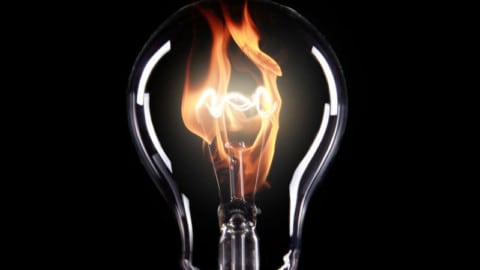The Australian Energy Market Operator (AEMO) has released a report of its continuing investigation into the events leading up to load shedding in South Australia on 8 February 2017, and has called for all parties to work together as the national energy market transitions.
At 6:03pm, AEMO directed ElectraNet to interrupt 100MW of customer supply to restore system security and avoid the risk of a wider scale disruption.
AEMO confirmed that after it contacted generators to explore options to increase supply, it became apparent there was insufficient generation to meet demand and load shedding became the only option to restore system security.
The report also highlights that actual load shedding was considerably higher by the local network operator, approximately 300MW.
SA Power Networks has now confirmed that the additional load shedding was the result of a software error, the cause of which they are continuing to investigate.
At 6:30pm AEMO directed load to be restored.
The report shows that leading up to the event demand was higher than forecast, wind generation was lower than forecast and thermal capacity was reduced due to forced outages.
The report also provides a breakdown of generation preceding the event. At that time:
- Thermal generation was supplying 68 per cent of South Australia’s electricity, operating at 81 per cent of its capacity and producing at near its highest point for the day
- Wind generation was supplying three per cent of South Australia’s electricity, operating at six per cent capacity and at near its lowest point for the day. Fifty per cent lower than the forecast two hours earlier and down 90 per cent from its highest point of the day
- Solar generation was supplying five per cent of South Australia’s electricity, operating at 22 per cent of its capacity and producing at less than a third of its peak for the day
- Interconnectors were supplying the balance of power into South Australia (24 per cent) and were operating at 93 per cent of its capacity.
AEMO Executive General Manager Stakeholders and Information, Joe Adamo, said, “The complexities and challenges of managing short-notice generation capacity reductions amid high temperatures and increasing electricity consumption are real. And they’re here.
“Energy transition needs co-ordinated planning and this is best achieved when we are all dealing with facts.
“The facts in this report outline that load shedding became the only remaining available option for AEMO to restore power system security.
“This action prevented the risk of damage to crucial infrastructure, which if impacted, could have had a prolonged, and potentially disastrous impact to energy consumers,” Mr Adamo said.
AEMO said it supported the need to evolve the National Electricity Market (NEM) design to meet current and future requirements, and called for greater unity to address the growing challenges of today’s power system as stakeholders were fundamentally critical to the evolution.
“This transition to a reliable, affordable and sustainable framework is everyone’s responsibility. The challenges faced last Wednesday showed that we all need to adapt and evolve to manage the complexities of today’s market,” Mr Adamo said.
AEMO is encouraging the development of new technology and the evolution of business models across the supply chain to provide a secure, low emission power system, while at the same time managing the costs to the Australian community.
In its planning documents in recent years, AEMO has consistently stated that the National Electricity Market (NEM) is in transition.
In 2015, AEMO began a collaborative work program with the Australian Energy Market Commission (AEMC) to work together to identify appropriate solutions for Australians.
AEMO said it could not guide the transition without support, and broad engagement would be needed for future success.
In the short term, AEMO is hoping to work closely with the AEMC, the South Australian government, and South Australian network businesses to progress a range of urgent initiatives already underway to improve the stability of the South Australian power system.
AEMO said it would continue to work with governments, both federal and state, industry institutions and the community to positively progress key energy trends, and would continue to objectively and independently provide information via its suite of energy planning and forecasting publications.
Federal Environment and Energy Minister, Josh Frydenberg, said the report confirmed the complexity and fragility of maintaining energy security in South Australia, in particular the difficulty of forecasting and managing high levels of intermittent generation.
Mr Frydenberg said this was why the federal government was focused on energy storage and ensuring sufficient baseload power in the system.
Mr Frydenberg said the federal government had also asked the Australian Energy Regulator to investigate the action of generation market participants in South Australia on 8 February 2016.












